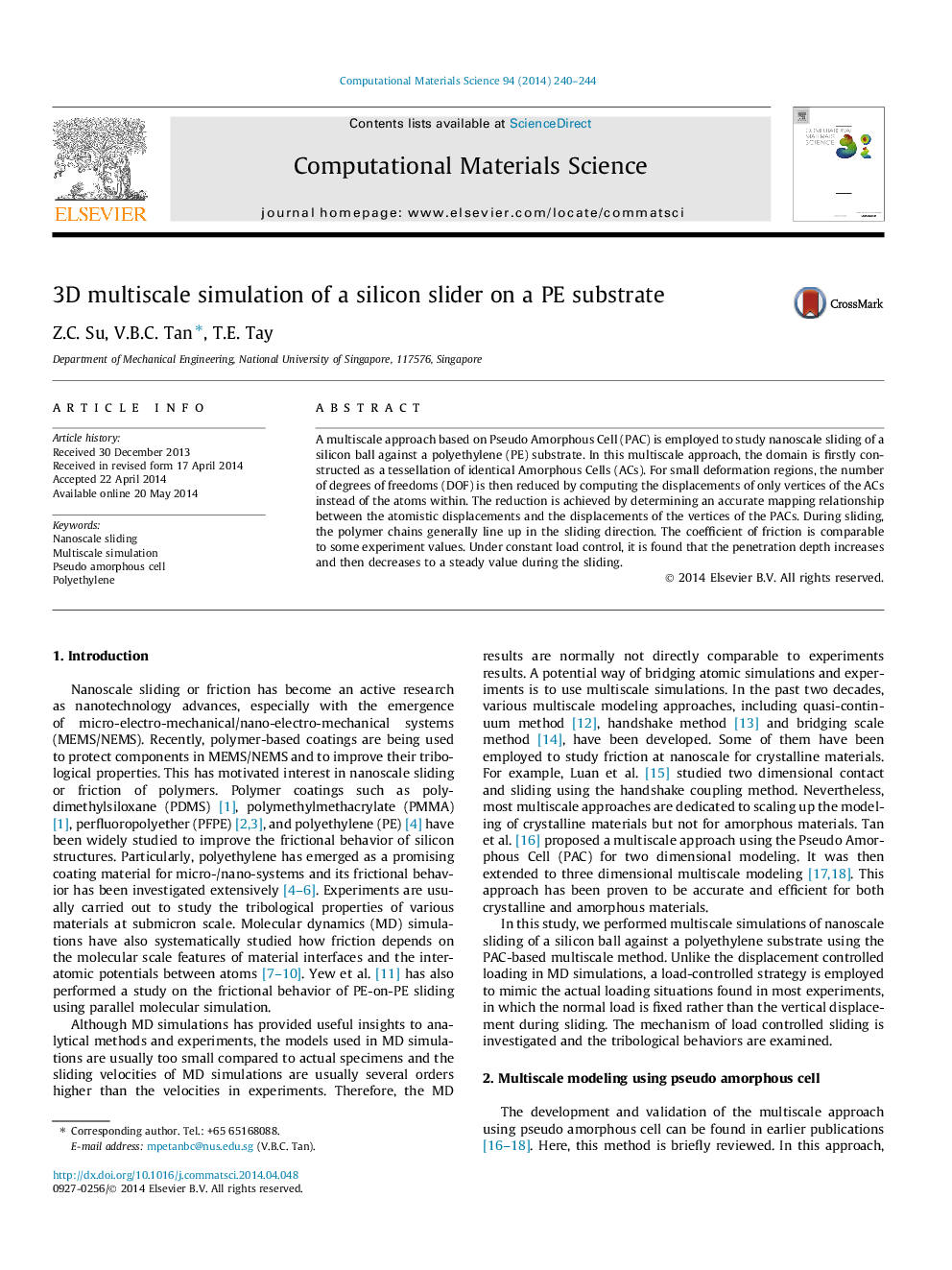| Article ID | Journal | Published Year | Pages | File Type |
|---|---|---|---|---|
| 1560808 | Computational Materials Science | 2014 | 5 Pages |
•A multiscale modelling approach has been applied to study nanoscale sliding.•Surface morphologies with molecular details are presented.•The coefficient of friction is found to be comparable with experiments.•The penetration depth and mechanism of nanoscale sliding are elucidated.•Lower loads were observed to give larger fluctuations in friction coefficient.
A multiscale approach based on Pseudo Amorphous Cell (PAC) is employed to study nanoscale sliding of a silicon ball against a polyethylene (PE) substrate. In this multiscale approach, the domain is firstly constructed as a tessellation of identical Amorphous Cells (ACs). For small deformation regions, the number of degrees of freedoms (DOF) is then reduced by computing the displacements of only vertices of the ACs instead of the atoms within. The reduction is achieved by determining an accurate mapping relationship between the atomistic displacements and the displacements of the vertices of the PACs. During sliding, the polymer chains generally line up in the sliding direction. The coefficient of friction is comparable to some experiment values. Under constant load control, it is found that the penetration depth increases and then decreases to a steady value during the sliding.
Graphical abstractFigure optionsDownload full-size imageDownload as PowerPoint slide
